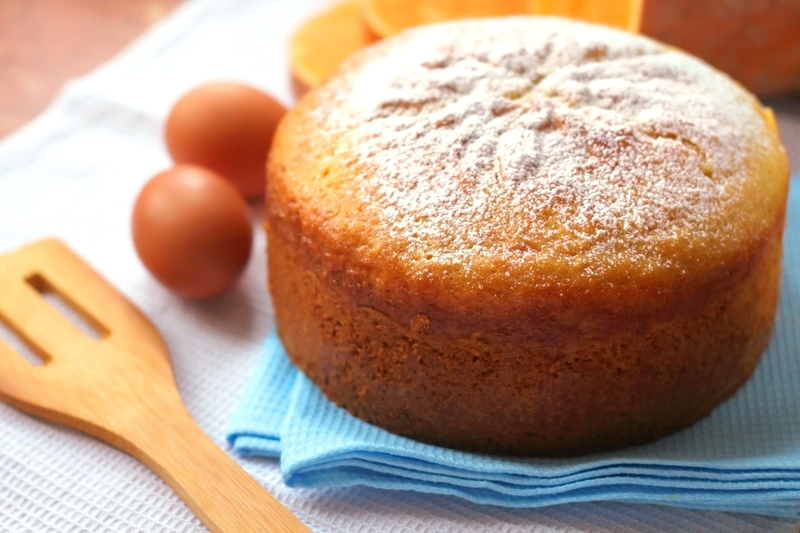 There’s nothing quite as delightful as the aroma of a freshly baked cake filling the air, and a crucial aspect of a perfect cake is its height and lightness.
There’s nothing quite as delightful as the aroma of a freshly baked cake filling the air, and a crucial aspect of a perfect cake is its height and lightness.
Achieving that fluffy and lofty rise can be a bit of a mystery for many bakers.
However, fear not, as we dive into the fascinating world of baking science to uncover the secrets behind what makes a cake rise higher.
From ingredients to techniques, let’s explore the key factors that contribute to that coveted tall and airy cake.
The Magic of Leavening Agents
At the heart of a cake’s rise lies the magic of leavening agents.
These are the key ingredients responsible for creating air bubbles within the batter, causing it to expand and rise during baking.
There are two primary types of leavening agents used in baking: chemical leaveners and biological leaveners.
- Chemical Leaveners: Baking powder and baking soda are the most common chemical leavening agents in cake recipes. When these agents come into contact with moisture and heat, they release carbon dioxide gas, which gets trapped in the batter, making it rise.
- Biological Leaveners: Yeast is a biological leavening agent used in some cake recipes, particularly in traditional fruitcakes. Yeast ferments sugars in the batter, producing carbon dioxide gas, resulting in a slow and steady rise.
The Perfect Balance of Ingredients
 Achieving the ideal rise also depends on the precise balance of ingredients.
Achieving the ideal rise also depends on the precise balance of ingredients.
Baking is, after all, a science of precision.
Key components that play a crucial role in the cake’s height include:
- Flour. The type of flour used and its protein content affect the structure of the cake. Cake flour, with a lower protein content than all-purpose flour, is often preferred for its ability to produce a tender and high rise cake.
- Sugar. Sugar not only adds sweetness but also contributes to tenderness and moisture retention. Too much sugar, however, can lead to a dense and heavy cake.
- Fats. Fats like butter or oil play a vital role in tenderizing the cake and assisting with the aeration process during mixing.
- Eggs. Eggs provide structure and stability to the cake. The whites trap air during whipping, while the yolks add richness and moisture.
The Art of Mixing
The way you mix the cake batter can significantly impact its rise.
The goal is to incorporate air into the mixture without overmixing, which can lead to tough cakes. Here are some tips to achieve the perfect mix:
- Creaming Method. Creaming butter and sugar together traps air in the mixture, resulting in a light and airy texture. It’s essential to beat the butter and sugar until light and fluffy.
- Incorporating Eggs. When adding eggs, do it one at a time, mixing well after each addition. This ensures proper emulsification and even distribution of air.
- Alternate Dry and Wet Ingredients. Gradually add the dry ingredients (flour, leavening agents) and wet ingredients (milk, buttermilk) alternately to the creamed mixture. This helps prevent gluten formation and overmixing.
Oven Temperature and Timing

Getting the oven temperature and baking time right is crucial for a higher rise.
Preheating the oven is essential to ensure the cake starts rising as soon as it’s placed inside.
- High Initial Heat: A burst of high heat in the beginning (first 5-10 minutes) causes rapid expansion of air bubbles, resulting in a quick rise.
- Avoiding Door Opening: Opening the oven door during baking can cause the cake to collapse. It’s best to resist the temptation to check on the cake until it’s almost done.
Bottom Line – What Makes a Cake Rise Higher?
A cake that rises higher is the result of a delicate dance between precise measurements, suitable leavening agents, and proper baking techniques.
Understanding the role of ingredients and the science behind leavening agents empowers bakers to create impressive towering cakes that not only look stunning but also taste divine.
So, the next time you embark on a baking adventure, armed with this knowledge, let your cakes rise to new heights and dazzle everyone with your baking prowess.


